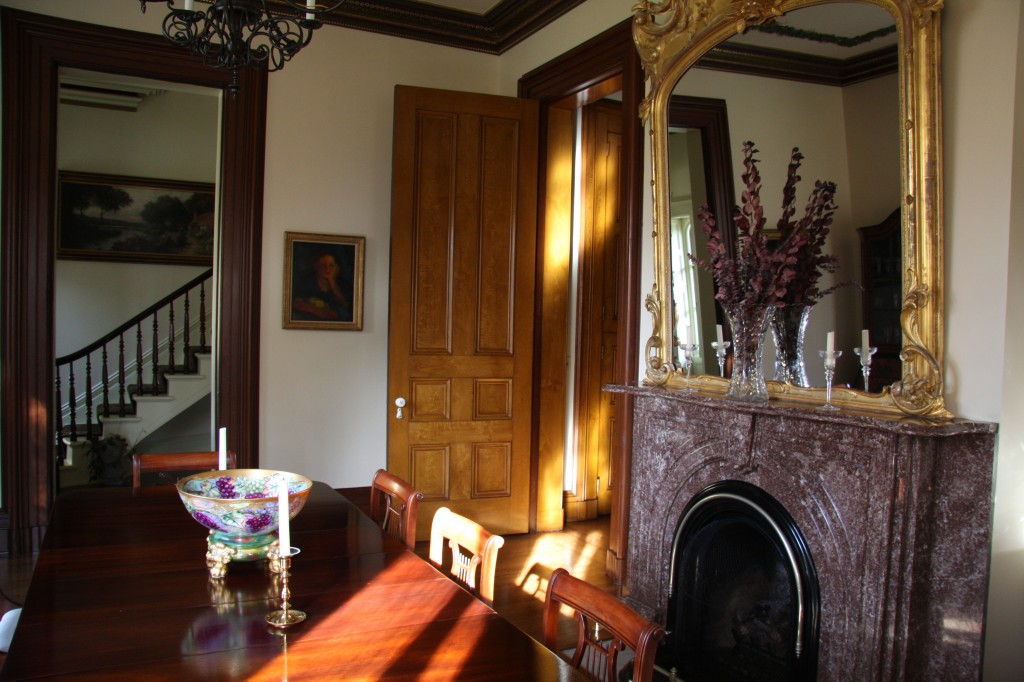The two neighboring, University-owned mansions on Mt. Hope Avenue couldn’t be more different. Both are the
President and Provost’s official residences, but the Patrick Barry House is 150 years old and a Rochester landmark while the Witmer House, at 100 years old, is anything but ancient.
Provost Ralph Kuncl and his wife Nancy think the Patrick Barry House was the better deal. Despite its necessary modern updates — an entirely new kitchen and electrified chandeliers — the Kuncls live in a house saturated with period art, furniture and architecture.
“Most people’s experience at the Witmer House is the same as an experience would be in a museum,” Kuncl said. “It’s a museum gallery, as opposed to this, which is obviously a home … People like it for that reason. They think this is a piece of the University they are proud to own.”
Patrick Barry, a Rochester businessman, built the house in 1855 as a Victorian-style Italian villa. His widow, Harriet Leisching, whom Kuncl credits for preserving the house’s original state, acted as caretaker. When UR bought the residence in 1973, it became a home to UR Presidents and Provosts. By the time the Kuncls arrived in 2007, the house showed its age, and so they undertook a project to renovate the home.
When Kuncl provides a tour of the house, he fulfills the role of curator rather than houseguest. He explains the portraits of people he never knew and displays of lead-containing glassware he cannot use. The level of detail in design is incredible, with 13-foot ceilings ornately decorated and doors painted two different tones to resemble different woods.
“We are steward of the University’s property,” Kuncl said. “This house survived 150 years primarily because of the pride of ownership … It requires a stewardship by an almost disinterested University that’s in business for perpetuity. We have to maintain that same mindset as stewards of the house so it lasts forever.”
The inside of the Patrick Barry House may be an authentic history tour, but the Witmer House feels very much like entering a modern home of a university president. The space is big, thanks to renovations in 2006 that expanded the house by 2,400 square feet, and the walls are white.
Just over 100 years old, the Witmer House isn’t nearly as aged as the Patrick Barry House. The house is the brainchild of the architect that built the George Eastman House, and from the front, with its pillars, the house looks like a miniature of its grander, larger brother. The house belonged to the son of Patrick Barry — William, class of 1890 — but was named after G. Robert Witmer Sr. ’26. It became the official University president house in 1984.
For originally belonging to a class of 1890 alumnus (William Barry), it is somehow appropriate that everything inside the house connects to the University. The Memorial Art Gallery loans much of the artwork lining the walls, and the library collection sitting off in a smaller room contains works by University authors and biographies of Rochester heroes. Although some of these books may rotate depending on the occasion in the house, the standing book about George Eastman has a permanent seat, unsurprisingly, at the center of the bookshelf.
As for the house itself, the reception areas are vast yet empty, except for blue cloth-covered tables prepared for the evening’s reception. That evening there would only be a few dozen guests, hardly comparable to the house’s all-time capacity of 270.
The enormity is one of the reasons UR President Joel Seligman and his wife moved to a smaller, privately owned home in 2009. Seligman said they found the house too large for two people and a decreasing number of pets. But there was also the feeling of less privacy in a home that functioned in the public sphere of university business.
The Patrick Barry House, though, is inherently a more intimate space. The events there embody a different ethos of community and intellectual curiosity. Some of Kuncl’s favorite events include themed dinners, ranging from mountaineering to celebrating the Chinese New Year, and 18th-century-style salons. Junior Kristian Brooks, who attended Kuncl’s Winter Olympics-themed dinner, found it intimidating.
“I remember not wanting to touch anything,” Brooks said. “There’s really this air of aristocracy. It was all very historical, clearly valuable items. I felt out of place.”
By the very character of the houses events at the two properties are of different natures. The Witmer House is a less intimate space, and in many ways better suited for University business. While Seligman finds the space perfect for its many purposes — faculty, student and trustee receptions and interviewing candidates for job positions — he has one qualm. He wishes it was closer to the rest of the University’s properties.
“It is one of the oddities of the house,” Seligman said of his official university residence on Mt. Hope Ave. “Your nearest neighbors are in the Mt. Hope Cemetery.”




